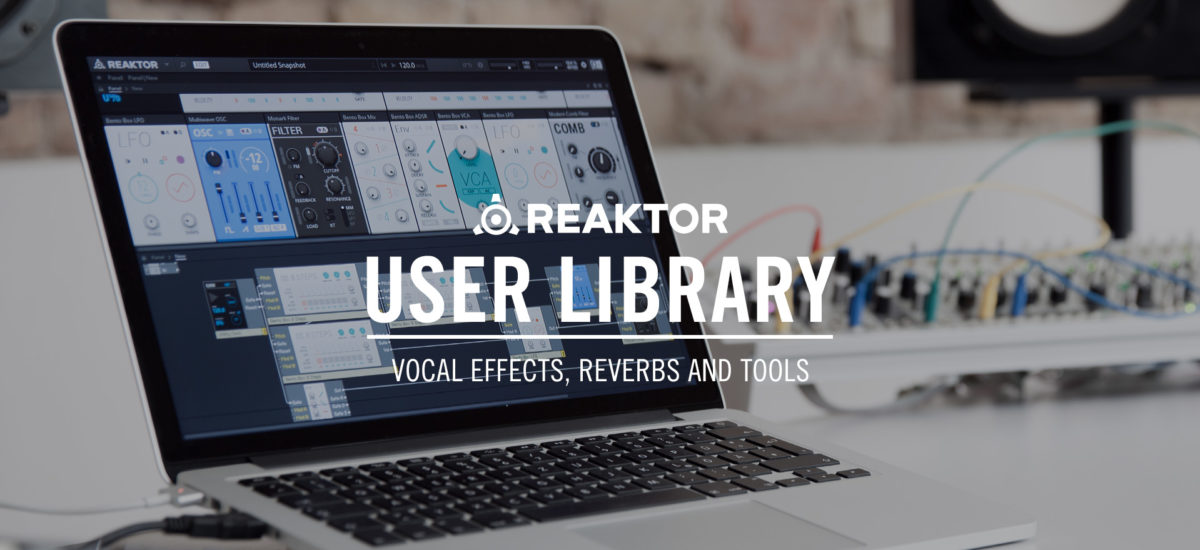
The voice, more than any other ‘real-world instrument’ is our first, last and most primal musical tool. In the context of contemporary pop and EDM, it’s evolved into much more. From Bob Dylan’s unadorned narrative ululation, to the post-human processing of Bon Iver and Daft Punk – strategies for shaping the voice are legion.
Within REAKTOR‘s free User Library, we find some exceptional tools to achieve just this; EQs and compression ensembles to ‘lift and tone’, reverbs to place the voice in virtual space, and pitch-shifting, tuning and vocoding devices for radical transformation.
Here are some highlights:
Vintage equalisation
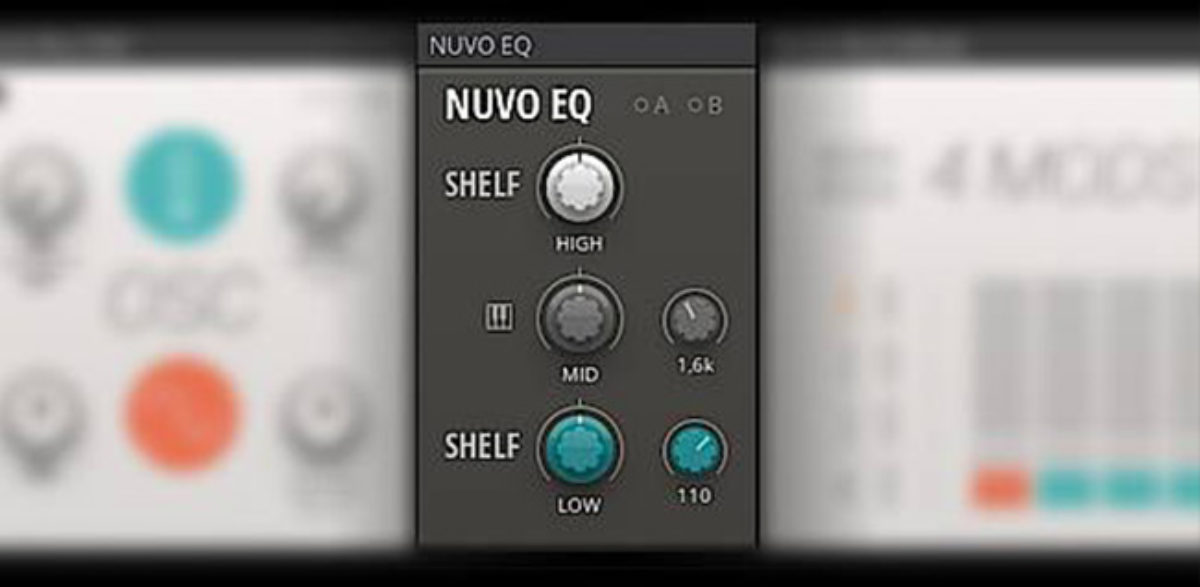
‘Vintage’ style EQs were once niche tools in a connoisseur’s market. No longer.
Blink and you’d miss them, but Robert Vettel’s quietly surprising Nuvo EQ and Nuvo 2074, are venerable (and free!) contenders. Modelled on an unnamed “well known British Class-A Equalizer, designed in the 1970s”, both are excellent, and nod clearly to the classic big studio consoles.
As part of a vocal chain, this pair may not quite surmount the peaks of its solid state companions, yet you’ll be surprised by their considered authenticity. Those in need of radical equalisation best look elsewhere – yet for producers with an ear for the classic, Vettel delivers a venerable, smooth A-Class British EQ tool.
Inga Naïve Leveller
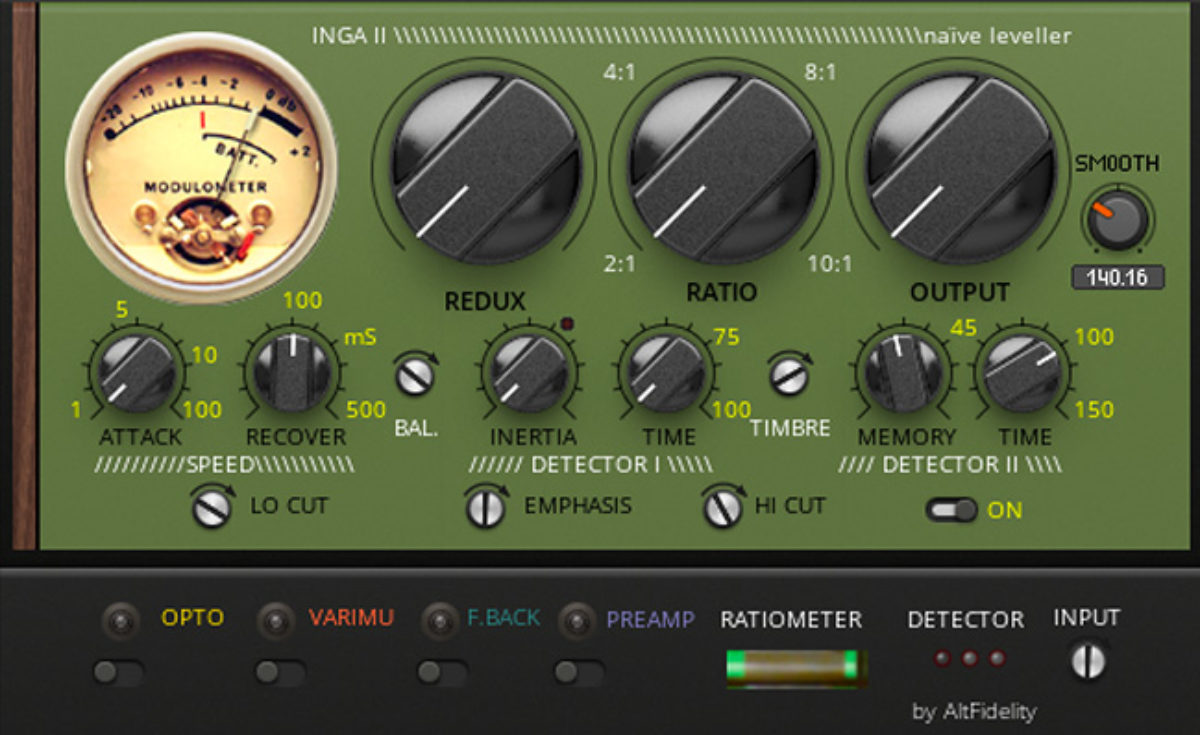
Great vocal recordings are wasted if source recordings are dynamically erratic or lack presence in a mix.
As an ensemble which namechecks classic limiters, Inga excels at subtly controlling unwieldy vocal dynamics with finesse, and adds weight and consistency to any source material.
Like the Nuvo EQ’s mentioned previously, the Naïve Leveller is a fantastic compressor / limiter to include in your gain-staging chain. Not only is it transparent and highly responsive, but also exceptionally well suited for imbuing radio or podcast vocals with weight, warmth and sheen – there’s even a ‘drive’ dial included to gently saturate your signal, if desired.
Check out Inga here.
Mastering Limiter
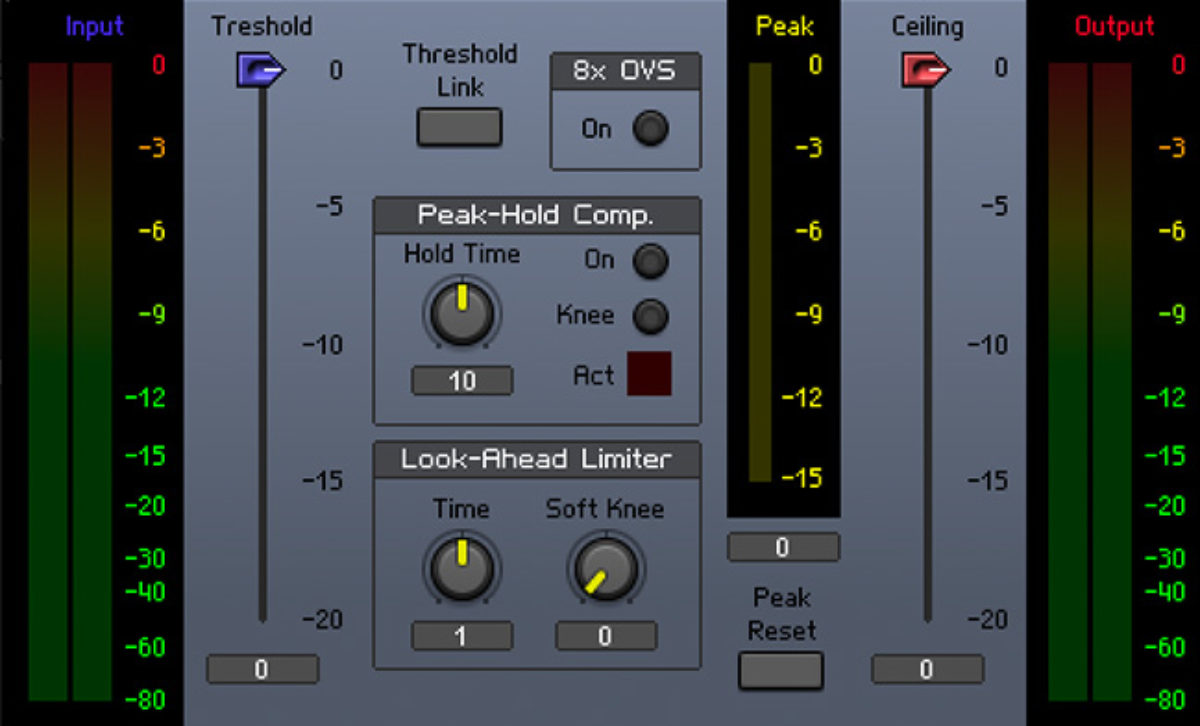
Bearing an uncanny semblance and sonic profile to several more pricey 3rd-party alternatives, Mastering Limiter’s claims of being a ‘high quality transparent limiter’ are certainly not overstated. Like the ‘Inga’ leveller, this is drably named ensemble is a powerful addition to any channel strip. Unassuming, yet a beautifully ‘pro’ sounding utility’, with an intuitive and responsive GUI.
Check out Mastering Limiter here.
In space, we can still hear you scream…

Consensus on the the ‘best’ spacial effects to deploy for vocal production is impossible to reach – vocal production trends over decades are just too diverse.
From the creamy analogue heyday of the tape, spring and transistor effects popularised in 60s dub and pop, through the digitalital glaciality of 80s plates and algorithms, and the renaissance of warmth in 90s tropes (here’s look at you, Nelle Hooper), options are vast.
Amid this expanse, it’s reassuring to discover ensembles like Guenther Fleischmann’s Native Yardstick and Ultimate Reverb.
Both are exceptionally usable, canvassing usable, ‘naturalistic’ sounding ‘verbs and real-world impulse-response profiles. Put either on an auxiliary send, and dial in the stadium performance of your dreams, or hole up with Björk in your own virtual toilet cubicle.
Check out Native Yardstick here.
We are the robots…
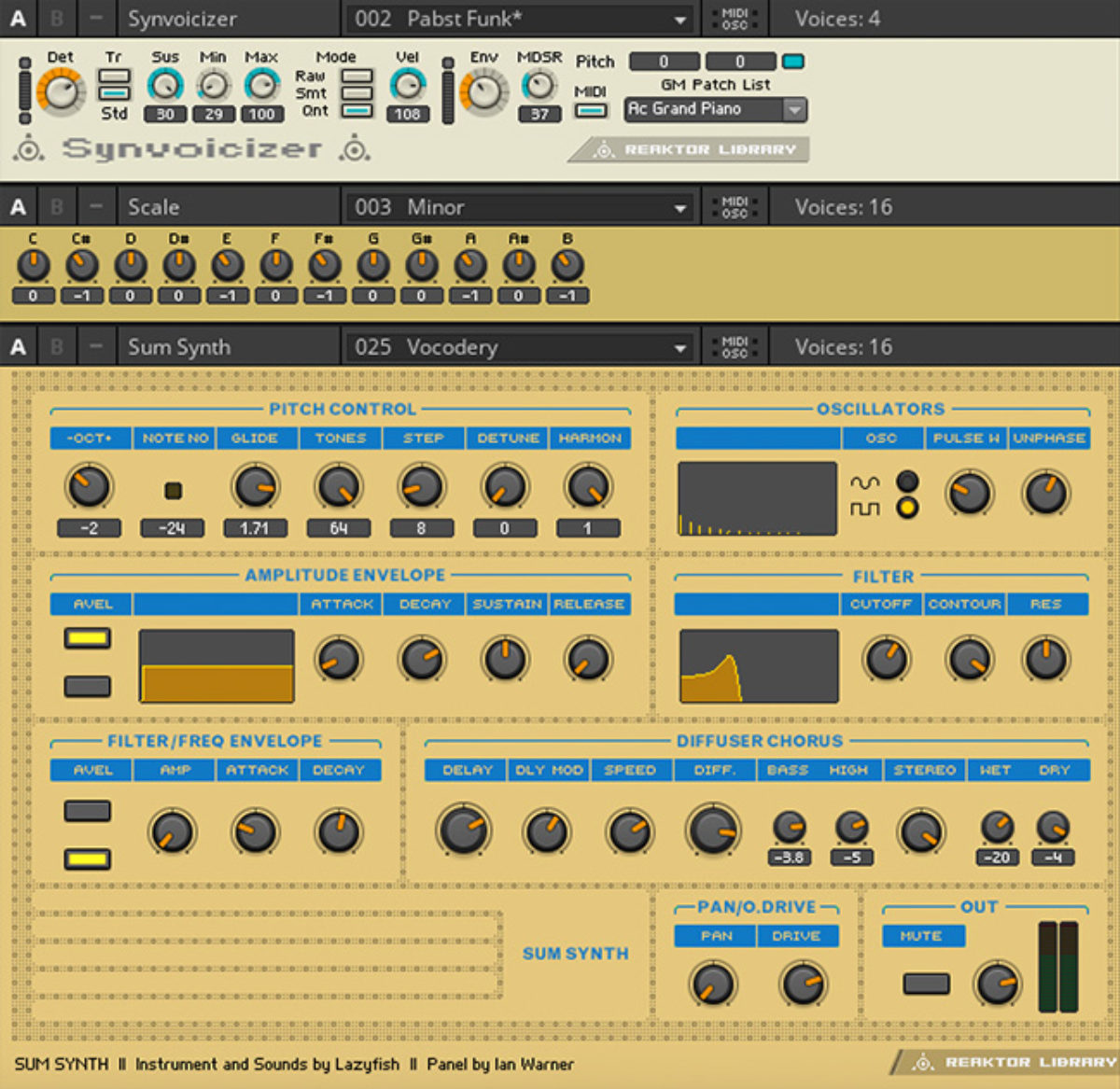
Beyond vocal fundamentals, the Reaktor User Library plays host to some radical ensembles from an alien future.
Nathan Ramella’s ‘Heavy Lifting’ processor is the kind of hybrid pitch-tracker / vocoder which makes James Blake and Bon Iver fans swoon. Carefully applied snapshots like “Stereo Pad” and “Rich Bow” are a good starting point for those interested in approximating this unique contemporary sound.
Requiring some finessing to optimise for different vocal styles, this ensemble is best suited for solo voices – but can generate spectacular results with patient tweaking.
The key to really making this Heavy Lifting sing is an awareness of the key of source material, and judicious selection of the modulating tone for the carrier (the vocal) signal. Classic modulator tones are catered for in the “Synvoicer” section, which includes sharp FM tones like “DX-7 Piano”. Spend a little time experimenting, and Heavy Lifting will yield results, lifted from a Compton existing in the near future.
Check out Heavy Lifting here.
Classic vocoding
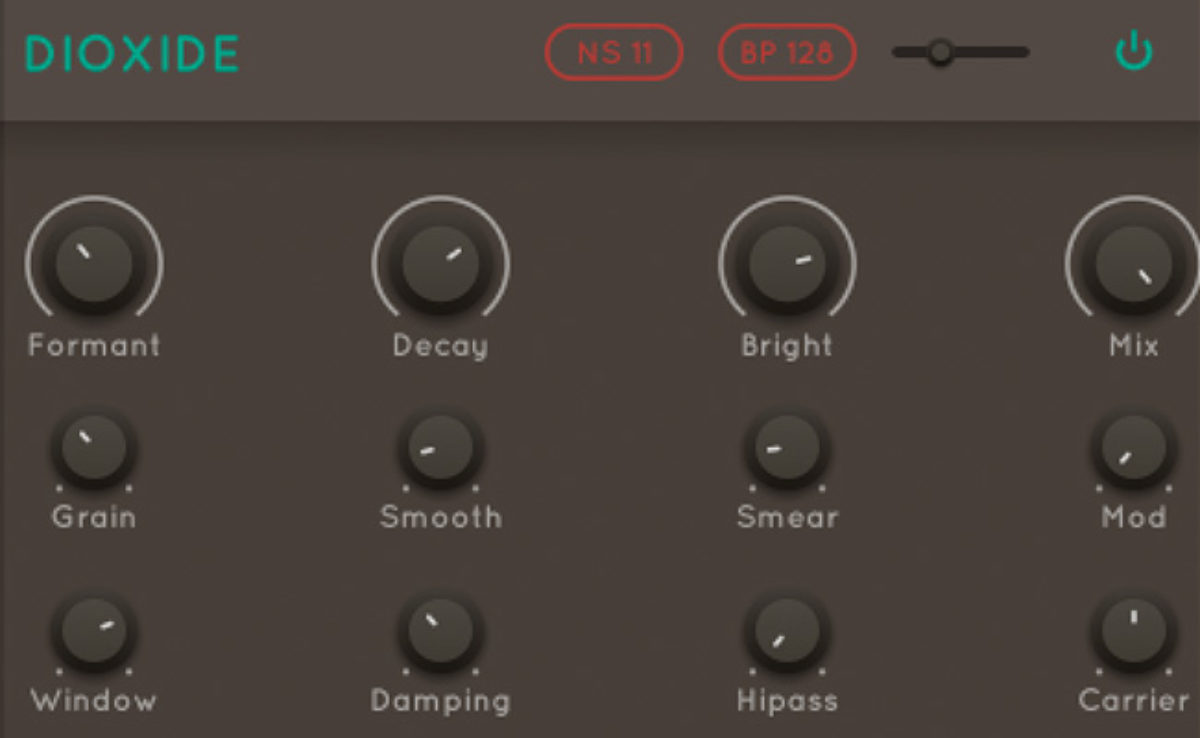
Dioxide may well be the best free vocoder you’ll find in REAKTOR. Requiring some basic setup knowledge for novice vocoder users (do familiarise yourself with the concept of ‘carrier’ and ‘modulator’ signals before diving in!) Dioxide does everything it ‘says on the tin’ with class and controllability. From Dalek mutations to classic Kraftwerk, Dioxide delivers, with a beautifully designed GUI.
Check out Dioxide here.
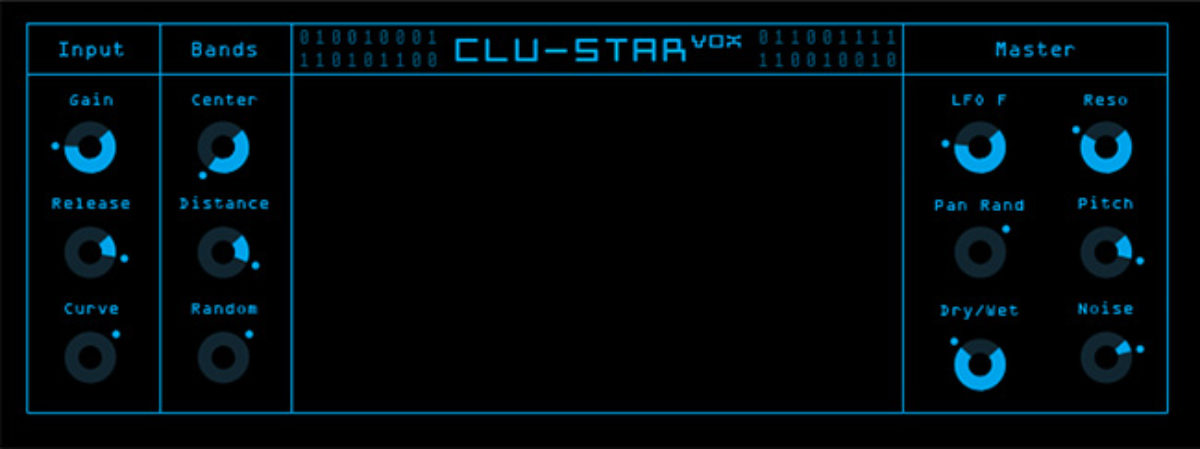
Clu-Star Vox is a wonderful self-contained vocoder effect. More ‘immediate’ than its hi-fi brother-in-formants, Dioxide, it’s a great special-effects tool which is particularly suited to generating instant ‘robot’ effects. For those with less inclination to route and patch signals, Clu Star’s inbuilt carrier tone (and great snapshots like “Classic Robot”) provide instant gratification, and intuitive tonal control.
Check out Clu-Star Vox here.
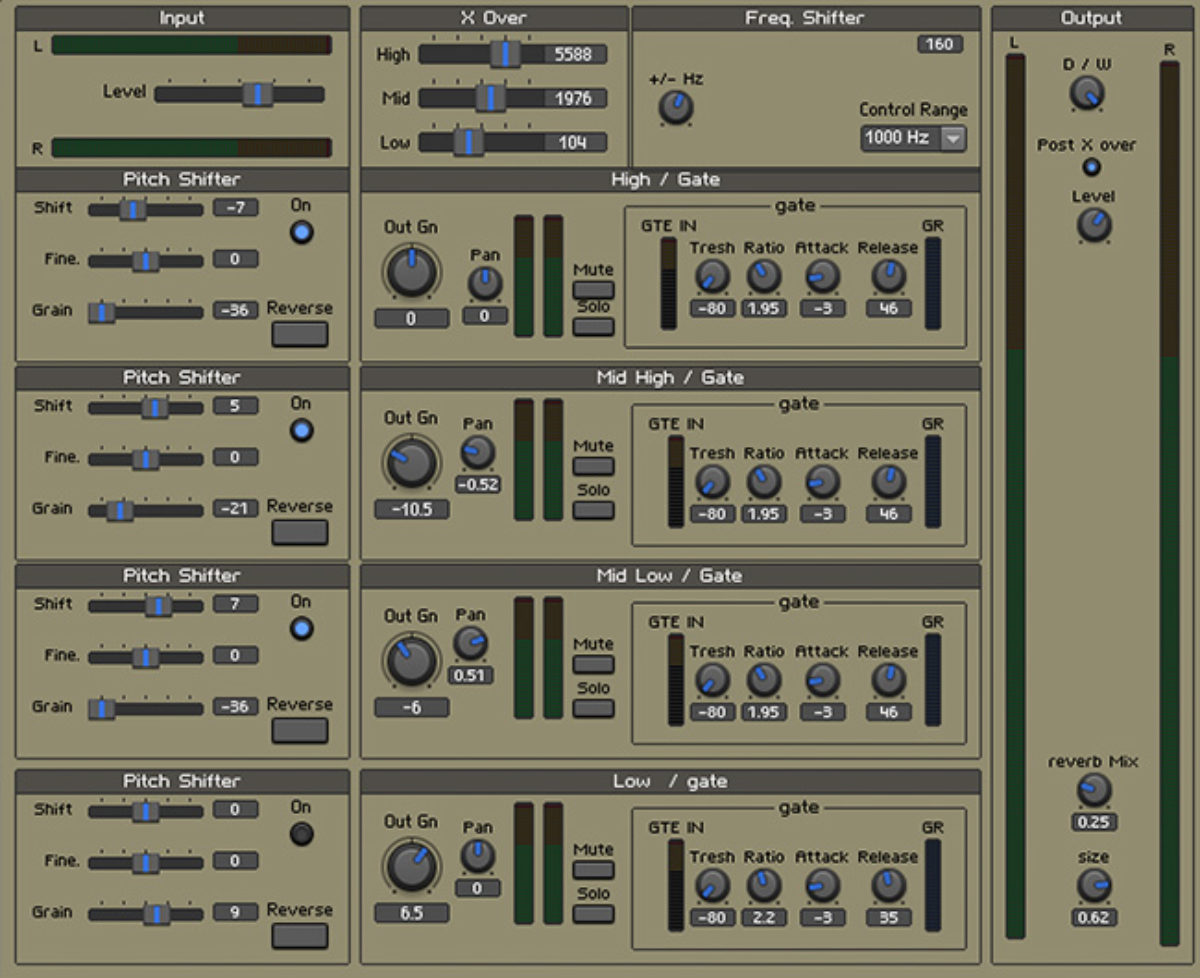
Re Pitch 3 delivers a flexibly orthadox multi-band pitch-shift effect. Useful for both choral thickening effects, through more extreme ‘ketamine-bent’ pitch treatments favored by the minimal techno gliterrati, it is great fun yet fails to answer the ancient koan, “Why ARE the vocals pitched down so looooow?”
Check out Re Pitch here.
Last but not least, Autotune…
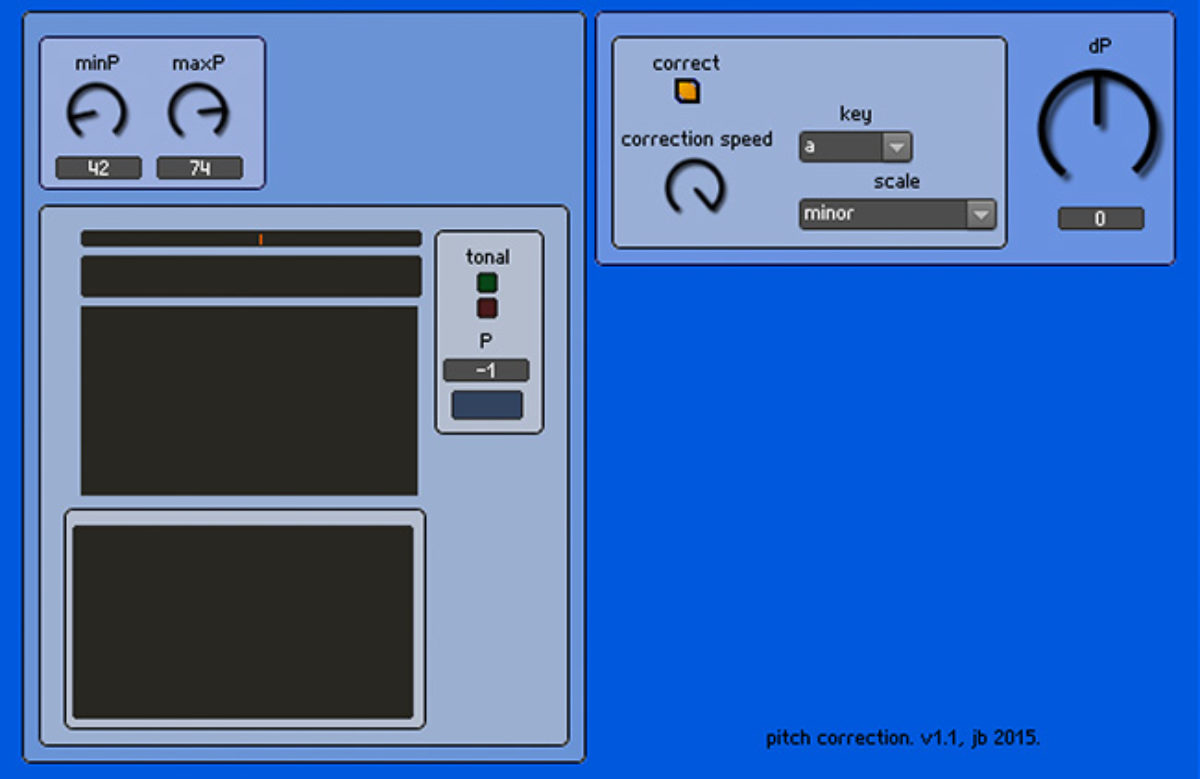
Electronic music’s embrace of pitch correction began subtly during the 80s, when producers Stock Aitken and Waterman found the effect useful for making relatively attractive people sing more tunefully.
The taboo of artificial pitchiness was subsequently breached in Cher’s 1998 hit, “Believe” and subsequently by auteurs T-Pain, Kanye West West, and countless others in the ‘urban music’ fraternity. Long absent from the hallowed archives of the Reaktor User Library, pitch-correction ensembles remain scarce, with a couple of notable exceptions.
The humbly named Pitch Correction allows for subtle to infinitely gratuitous ‘hard tune’ corrections of monophonic signals, and simple, low-latency pitch transposition of up to 12 semitones in either direction.
For any toying with ‘trap vocals on a budget’, dive in and rewards will be rich and reassuringly grating. Used more subtly, this is a great tool for creating more understated doubling or formant shift treatments.
Check out Pitch Correction here.
—
Outside the Reaktor User Library, Native Instruments Molekular is a (paid) multi-effects ensemble comprised of 35 discreet DSP tools. It can effortlessly re-tune, harmonise and modulate even the most mediocre of vocal deliveries into a sophisticated, shimmering vocal instrument.
Molekular is also perfectly suited to live performance, and is infinitely mappable to your favorite control-surface.
Pre-dating Molekular by some 5 years, Tim Exile’s inventive The Mouth can tune, re-pitch, harmonise, vocode and even generate new rhythmic or melodic ideas from any input source – though, based on Tim’s own performance strategy is delightfully geared towards sounds coming from his instrument of choice – his mouth.
*Samples and loops in audio examples are taken from the following Sounds packs, with additional test elements from TRX Machinemusic
Soul Vocals (Sountrack Loops)
Validated Praise (Hookshow)
R&B Red Carpet Edition (Hookshow)















